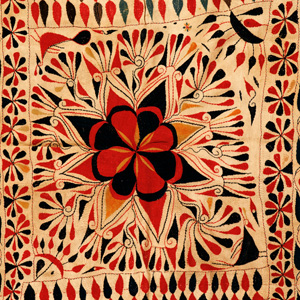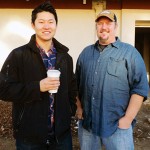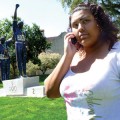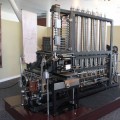When the San Jose Museum of Quilts & Textiles opened in 1977, it was the first of its kind: the only museum in the nation dedicated to textiles as an art form. Now it’s the last one standing in Northern California after its San Francisco counterpart shuttered amid a funding crisis about a year ago.
San Jose’s quilt museum, a sunny gallery and gift-shop space in the SoFA district, says it will close its doors unless donors come through with $80,000 before the end of March. (About $50,000 had been raised so far.)
“The museum has always been very financially sound,” says executive director Christine Jeffers. “But with the recession and decline in arts funding, that support we once had is no longer there.”
After 35 years of financial solvency, the museum ended each of the past two years with a 9-percent deficit. Corporate, individual and government funding dropped during the recession and never quite recovered. The already competitive world of arts funding became all the more cutthroat. Half of Jeffers’ grant applications get declined, she says, and she is competing against hundreds of organizations for the same limited pool of cash.
Admission revenue only makes up 3.5 percent of the nonprofit’s $710,000 annual operating budget. To cope with multiyear shortfalls, the museum’s staff has shrunk to two full-time workers and a handful of part-timers. About 50 volunteers dedicate enough hours to keep the place up and running Wednesday through Sunday every week. Jeffers took a 20-percent hit to her own salary last fall.
“I think that in the arts world there is just a lot of competition, and there are other museums that are more established and have a larger base of support,” Jeffers says. “It’s tough.”
The San Jose museum is headed for another shortfall this summer, says Jeffers, who was hired by the museum in October 2011 to help steer it away from the kind of financial emergency it now faces. Despite all the cutbacks, expenses remain high. The energy bills alone run about $2,600 a month.
Marie Strait, president of the museum’s board of directors, sent out an emergency appeal for funding on March 14 to stress the severity of the nonprofit’s financial duress.
“All areas of revenue at the museum have experienced a decline in the last fiscal year, with the most significant being support from foundations and corporations,” Strait wrote. “The staff has been incredibly diligent and has taken advantage of every appropriate available opportunity to seek funding and write grant proposals to corporations, foundations and government. More grants have been written in the last year than in previous years, but foundation dollars have been reduced and overall funding for the arts is dwindling.”
The threat to shut down was not an empty one, Strait adds: “If you are asking yourself what will happen if you don’t make a gift—the truth is, the doors will close.”
Strait and Jeffers hope the appeal will snag some new donors and prevent the organization, with its unique mission to promote textiles as a cultural study and art form, from unraveling.
“What we do is really a niche thing,” Jeffers says. “Textiles is not traditional art form; it’s not photography or painting or sculpture or the kind people normally associate with museums and fine arts.”
Quilting and textiles are woven into the fabric of virtually every culture for as long as anyone can remember, Jeffers says. It’s an art worth paying to preserve and promote. The San Jose gallery showcases 850 pieces, held for public trust. Lecture series and classes taught by leading experts teach the history and practice of quilting.
Since the art of textiles is so grounded in world history and multicultural study, it’s only fitting that it calls a melting pot like Santa Clara Valley home.
“Cloth is at the core of human experience,” the museum website reads. “Every culture throughout history has had a textile tradition through which people learned about and sustained their social, civic and religious rituals. As largely a woman’s tradition, quilting became a primary vehicle for women’s social, political and artistic expression when other forms of expression were not available to them.”
Stressful as the situation is, Jeffers hopes it captures the public’s attention and sparks a renewed interest in the art.
“We’re preserving these items so that other communities and other generations can grow up to appreciate them,” Jeffers says. “They can see these textiles and understand that these have implications relevant to us, these are the clothes we choose every day to wear, these define cultures, they define your culture, they tell us about where we came from.”
San Jose Quilt & Textile Museum
520 S. 1st St., San Jose
http://www.sjquiltmuseum.org

 Steins Beer Garden & Restaurant
Steins Beer Garden & Restaurant  San Jose Walks and Talks Showcases Silicon Valley History
San Jose Walks and Talks Showcases Silicon Valley History 


